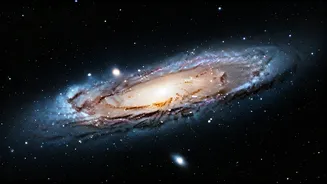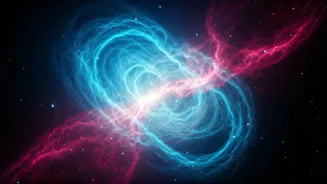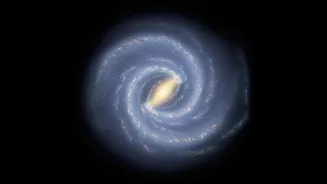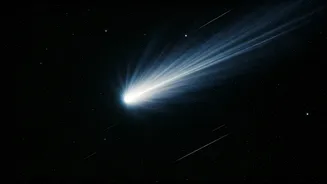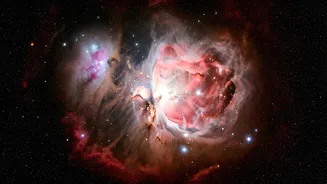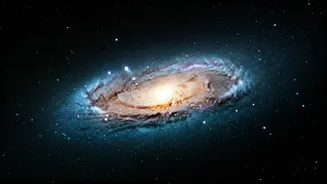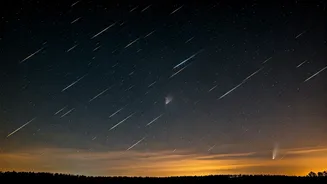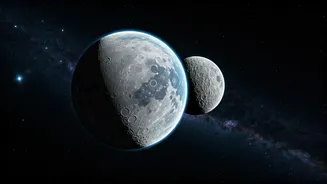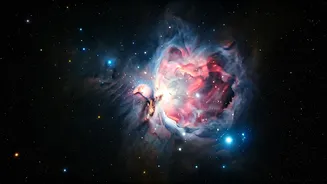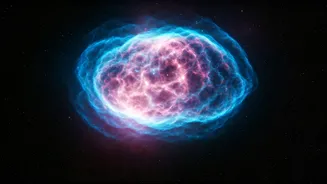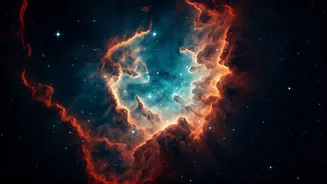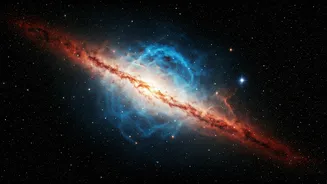Unveiling Cosmic Wonders
NASA's latest image release features a diverse array of celestial objects, each offering a unique perspective on the cosmos. These images are not merely
pretty pictures; they are rich with scientific data, providing insights into the formation of stars, galaxies, and planetary systems. The collection includes detailed views of nebulae, showcasing vibrant colors and intricate structures, as well as images of distant galaxies, revealing their shapes and compositions. Furthermore, the selection features breathtaking views of Earth, captured from space, highlighting our planet's atmosphere, oceans, and landmasses. The images serve as a testament to the power of space-based telescopes and instruments, which are constantly pushing the boundaries of our understanding of the universe. The agency consistently uses this data to further scientific advancements.
Nebulae's Vibrant Hues
Among the highlights are stunning images of nebulae, vast clouds of gas and dust where stars are born. These nebulae are often depicted in vibrant colors, a result of the different elements within them interacting with light. The images reveal the intricate structures within these stellar nurseries, showing the processes of star formation in detail. One of the images may showcase a planetary nebula, created by a dying star, presenting a halo of colorful gases. Each nebula showcases the dynamics of the universe. These images are not only visually stunning but also help scientists to understand the life cycles of stars and the evolution of galaxies. This data is critical to ongoing research.
Distant Galaxy Portraits
The collection also includes images of distant galaxies, offering glimpses into the vastness of space and the diversity of galactic structures. These galaxies vary in shape, size, and composition, providing clues about their formation and evolution. Some images might display spiral galaxies, similar to our Milky Way, with their swirling arms of stars and gas. Others may show elliptical galaxies, often older and more massive, or irregular galaxies, which are less structured. Analyzing these galaxy portraits helps astronomers to study the distribution of dark matter and understand the large-scale structure of the universe. Moreover, the images allow scientists to study the interactions between galaxies, such as mergers and collisions, which play a key role in their evolution. These scientific observations continue to drive scientific advancements.
Earth from Above
In addition to the celestial objects, NASA's image release includes breathtaking views of Earth. These images, captured from space, show our planet's atmosphere, oceans, and landmasses. They provide a unique perspective on our home world, highlighting its beauty and the effects of climate change. Images can depict the swirling patterns of clouds over the oceans, the lush greenery of forests, and the vast expanses of deserts. The images also serve as crucial data for monitoring Earth's environment, tracking changes in weather patterns, and observing the effects of human activities. Furthermore, they are a reminder of the fragility of our planet and the importance of conservation efforts. This is an important part of the NASA mission. These observations provide a wealth of information.
Science and Exploration
The images are a product of NASA's ongoing efforts to explore and understand the universe. They are created using a variety of space-based telescopes and instruments, each designed to capture different types of light and information. By analyzing these images, scientists can learn more about the physical processes that govern the universe. NASA's commitment to sharing these visuals enhances public understanding. These pictures fuel inspiration and encourage interest in space science. The agency's dedication to research and exploration allows all of us to peer into space, and to study our own planet.
